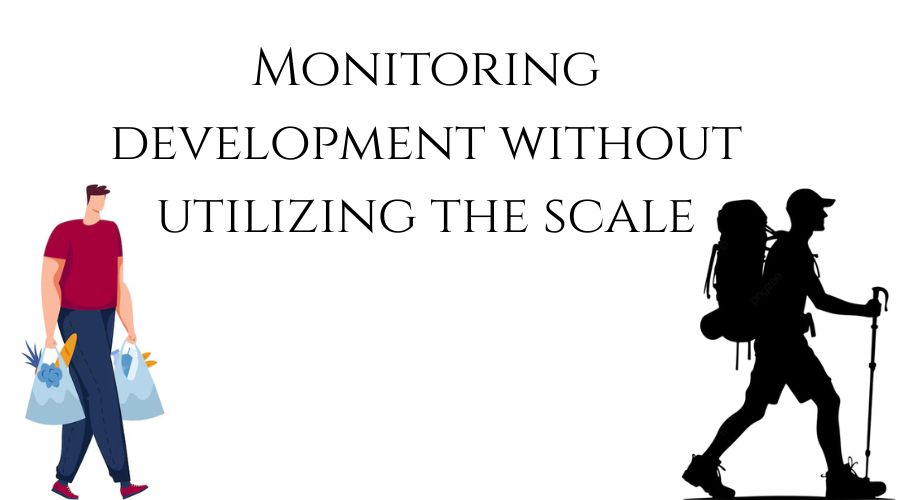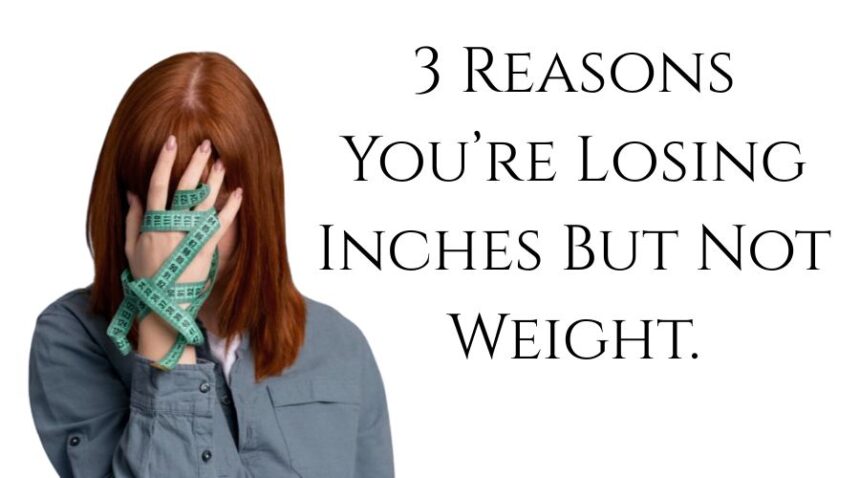Don’t worry if the number on the scale appears to be stuck even though your clothes are fitting better. Here’s what’s happening and why it makes sense to reconsider how development is measured. The number on your scale can seem like the most significant metric in the world when you’re attempting to lose weight. When it descends, you’re ecstatic. You can lose hope if it becomes stopped or moves up a bit. might believe that your healthful routines aren’t effective. The problem with weight loss, though, is this: It rarely follows a steady, linear falling trajectory.
It’s common to experience plateaus, ups, and downs. For some people, tracking weight as a gauge of progress might be useful, but it is by no means the ultimate goal of fitness and health.
In actuality, even if you’re experiencing other favorable indicators, such as improved clothing fit, your weight may remain constant. Even while losing inches rather than weight may seem natural, it can nonetheless be upsetting. Understanding what’s happening and realizing that there are other ways to gauge progress during a weight-loss program are two things that can be helpful. These three factors could be causing your body to shrink without you losing weight. And what you ought to do about it, if anything:
1. You’re losing fat and gaining muscle
Your body composition changes while you exercise. In other words, fat does not always weigh less than muscle, but it does occupy more space. Your clothing fits better as a result of that overall improvement. (Hello, loser trousers.)
Weighing the same thing you did when those trousers felt tight can be a little upsetting. This means that even while your weight isn’t changing, the proportion of muscle to fat tissue does, which is actually a far better measure of health than weight alone.
Your total mass is determined by your body composition, which is the sum of the weight of your organs, fat, muscle, bone, and water. Your bone mass tends to remain relatively constant, but other elements can fluctuate, altering your weight as well as your body’s size and structure. Age and other inevitable factors can change your body composition over time, but you can influence other aspects like exercise.
You can grow muscle and lose fat when you start exercising, especially if you’re weight training. This will help you shed inches, but it might keep the scale stable because gaining a pound of muscle and losing a pound of fat is a net-zero equation.
Although the exact causes are unknown, research has shown that the body slows down its metabolism in response to weight loss, making it more difficult to maintain the weight loss. To put it another way, you end up burning fewer calories during the day, which can eventually hinder your efforts to lose weight. However, gaining muscle can counteract this decline.
2. Your scale may need recalibrating
If you’re exercising, maintaining your diet, and losing inches but not weight, now could be a good time to make sure your scale is set correctly. Restoring your scale’s accuracy can be achieved by calibrating it, which is crucial if you relocated it from a different room or if it wasn’t on a level surface. (See the scale manufacturer’s website for calibration instructions.)
Establishing a regular weight-tracking regimen is also crucial. As meals, drinks, or clothing won’t affect the number, try it first thing in the morning after using the restroom. And keep in mind: It’s best to weigh yourself regularly throughout time to see the overall breadth of your development than to judge it by a single day’s weight.
3. Let your body adjust to the new routine
It can be your body’s ability to adjust if you suddenly stop losing weight even though you’re still following the same routine. Your body contains what are known as compensatory measures, which are methods it gradually adapts to higher energy expenditure. For instance, you burn more calories and see a change in your physique and weight when you first start lifting weights. Your body then becomes accustomed to the activity as it becomes more effective over time. Basically, your cardiovascular system gets in better form. You burn less calories and your muscles operate more effectively. You’re shedding inches but not weight as a result.
How to kickstart weight loss again

Although we wish there was a simple solution, the following two tried-and-true methods could help move the scale:
1. Track your eating patterns.
We occasionally compromise on some of our diet objectives as we make progress toward weight loss. Because your body may require fewer calories throughout the day as a result of your previous weight reduction, you may need to reduce your calorie intake if your eating habits remain the same.
2. Level Up Your Exercise
Start with your current workout and increase the weight you’re lifting; for example, try lifting five pounds instead of three. Alternatively, you might do more repetitions. Increase the speed or duration of your aerobic exercise, such as going from a brisk walk to a jog or extending your workout by five minutes. Think of the confidence that comes from being able to carry greater weights or feeling less breathless if this seems like an insurmountable task.
Is my body trying to tell me something? How can you determine when maintenance mode should be activated?
Think of this as your checklist:
- For a month, your weight has remained consistent.
- Before meals, you’re hungry, and following, you’re satisfied.
- You’re consuming foods high in nutrients.
- You’re getting good sleep
- Exercising in a style
- You’re not experiencing too much stress.
Some people’s biology may not be altered by adopting healthy practices. See your doctor to find out if you qualify for weight loss medication if you have stabilized your weight loss efforts but are still worried about your health.
Monitoring development without utilizing the scale

Finding additional non-scale successes is worthwhile to gauge success and maintain motivation, as the scale is only one tool for assessing progress. The least useful indicator of health and fitness is weight. It is advised to examine more objective measurements, such as blood sugar and blood pressure, as these can be more reliable predictors of health over time. More subjective metrics, such as sleep quality, energy levels, stress management, workout improvements in strength and endurance, and mental health changes, are then available for you to monitor independently.
Observing changes in the amount of effort needed for routine chores, such as carrying groceries or keeping up with companions on a hike, is another important way to gauge progress.
It’s enormous when you take into account how simple it is to navigate the globe and how you can do whatever you want without hesitation. A single number is a far less constructive goal than engaging in activities you enjoy without any restrictions.
Conclusion
There are other indicators of achievement besides the number on the scale. Additionally, losing inches matters. When the scale seems stuck, take your physique measurements to stay motivated. Ultimately, the things that have the biggest effects on your general health and confidence are the non-scale successes, such as feeling better and having more energy.
FAQs
Q1. Why do I weigh the same but feel thinner?
Ans: You’re growing muscle while reducing fat. It’s possible that you are gaining muscle, which is denser than fat, if you are exercising and eating healthily but aren’t noticing a change on the scale. This implies that even if your body composition has altered, your weight may remain the same.
Q2. Is gaining inches preferable to losing weight?
Ans: Fat is not compact and firm like muscles are. Because of this, you may have shed inches from your midsection, but the scale does not show the changes. This does not imply that your weight loss efforts have been unsuccessful. Actually, decreasing inches is seen to be a healthier method of weight loss.
Q3. What is preventing me from losing weight?
Ans: Hormonal imbalances, long-term stress, poor sleep, drugs, thyroid issues, sex hormone changes, blood sugar imbalance with insulin or leptin resistance, and poor gut health are some of the many variables that contribute to weight loss resistance.
Q4. What is the metabolism of the 2 2 2 method?
Ans: The first two are for meals that are fatty and meals that are high in carbohydrates. The third two stand for exercise, which includes bodyweight and/or high-intensity interval training, while the second two represent non-food-related elements like weekly weigh-ins and reflective writing.
Q5. Is it true that green tea increases metabolism?
Ans: Green tea preparations are utilized as weight loss and weight maintenance aids. Green tea’s catechins and caffeine are thought to have a part in boosting energy metabolism, which could result in weight loss.











